Boxing the collections: a review of a two-day workshop on magnetic box-making
The Special Collections Division of the University Library has an ongoing programme of boxing and housing collection items in custom-made enclosures of acid and lignin-free papers and boards. These enclosures protect the original items from dust and dirt, provide a buffer against temperature and humidity changes in the stores and offer physical protection and support for broken or fragile material.
- UYUY348
- ms37118/13
Examples of items rehoused as part of an ongoing programme of boxing and housing in Special Collections
The extensive range of items in different materials and in varying formats require a range of boxing and housing solutions depending on their extent, condition, use and value. One size definitly does not fit all!
As a comittee member of the Institute of Conservation (Icon) Scotland Group, Special Collections’ Preventive Conservator Erica Kotze organised a two-day workshop on magnetic box making. The workshop was held in the print studio at Dundee Contemporary Arts (DCA). Set among the intaglio printing presses, screen printing machines, inking-up tables and print racks; 12 delegates were led through the steps involved in making an archival quality magnetic box. The nipping press on wheels, ample table top space and bright sunny studio in a central location made the DCA print studio an ideal venue for this workshop.
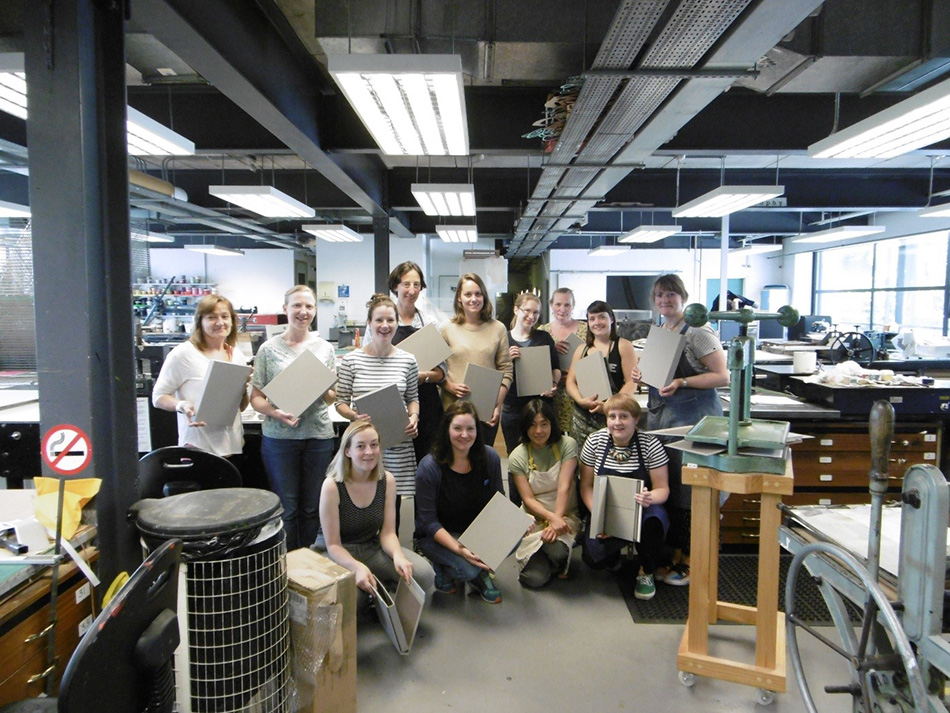
The event was run by accredited book conservator Sayaka Fukuda who was originally trained as a bookbinder. This workshop was a repeat of one run by Icon Book and Paper Group in February 2017 at Kew Botanic Gardens Library and Archives in Richmond, London. The Dundee workshop was an excellent opportunity for Scottish-based conservators and conservation technicians to learn new skills. Delegates included conservators specialising in textiles, paper, books, paintings and objects as well as conservation technicians from the University of St Andrews Special Collections, the National Library of Scotland and the National Galleries of Scotland.
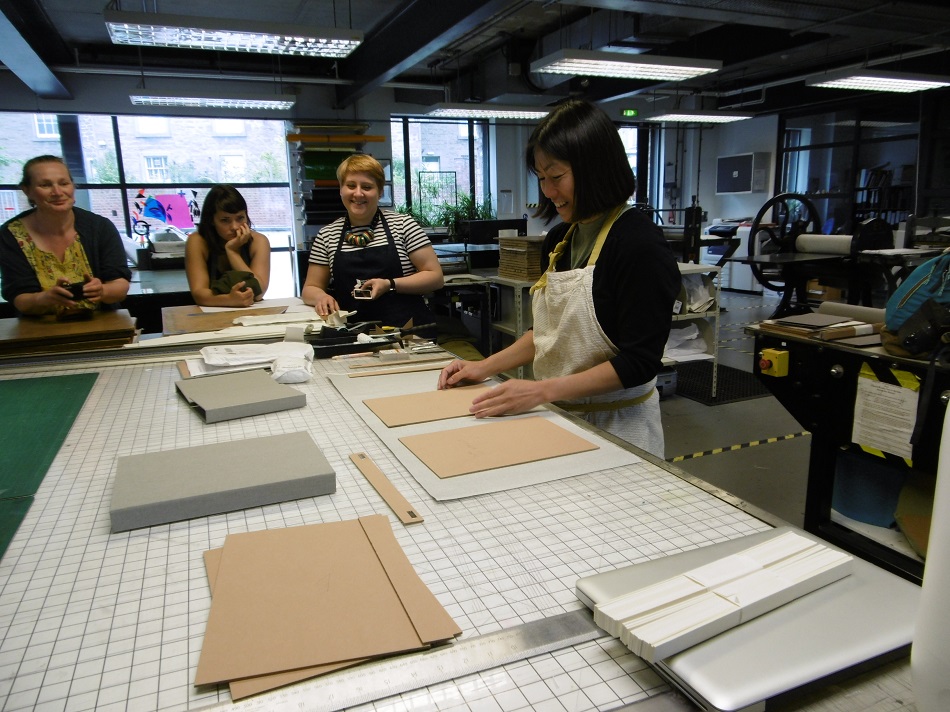
Conservators have only recently started to use neodymium magnets. One of the first applications was in mounts for original material for exhibition display without using adhesives. This use has been extended to holding items in place during photographic documentation and even in conservation treatments, for example in pinning out humidified parchment during flattening treatments. It is a logical progression that magnets should also start to be used in box-making as a fastening mechanism to secure boxes.
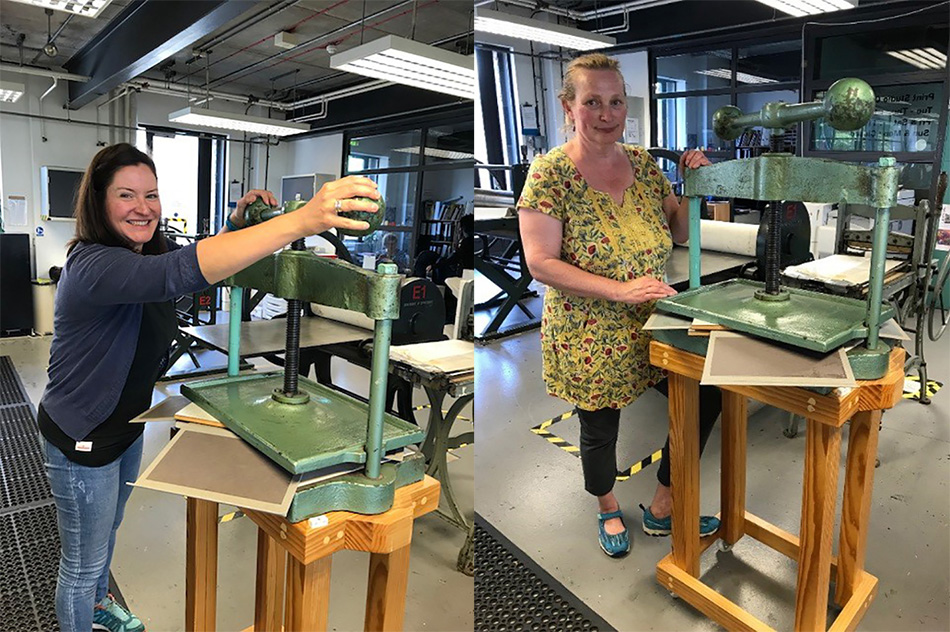
All the materials needed to make the box had been cut to size for the delegates before hand – including archival high density board, archival manilla, mountboard and Buckram covering material. Not having to measure an item requiring a box saved time during the workshop, but is the first and most important step in any rehousing project. Sayaka explained her method for measuring for which she uses a metal ‘L-shaped’ ruler. Learned from her years of experience as a bookbinder, Sayaka adds a few millimeters to each dimension which she describes as ‘air’. Original material is rarely square. The additional ‘trapped air’ is vital to ensure a good fit for the item and to accommodate elements used to make the box. Getting this step wrong can result in a box which is too big, allowing the item inside to move around and potentially get damaged.
No practical workshop using paper and board can start without a description of machine direction. After guiding the delegates through the steps of measuring, Sayaka explained the grain direction of machine-made paper and board. This was important as all of the papers and boards used in the box were cut with the grain direction running parallel to the folding hinges.
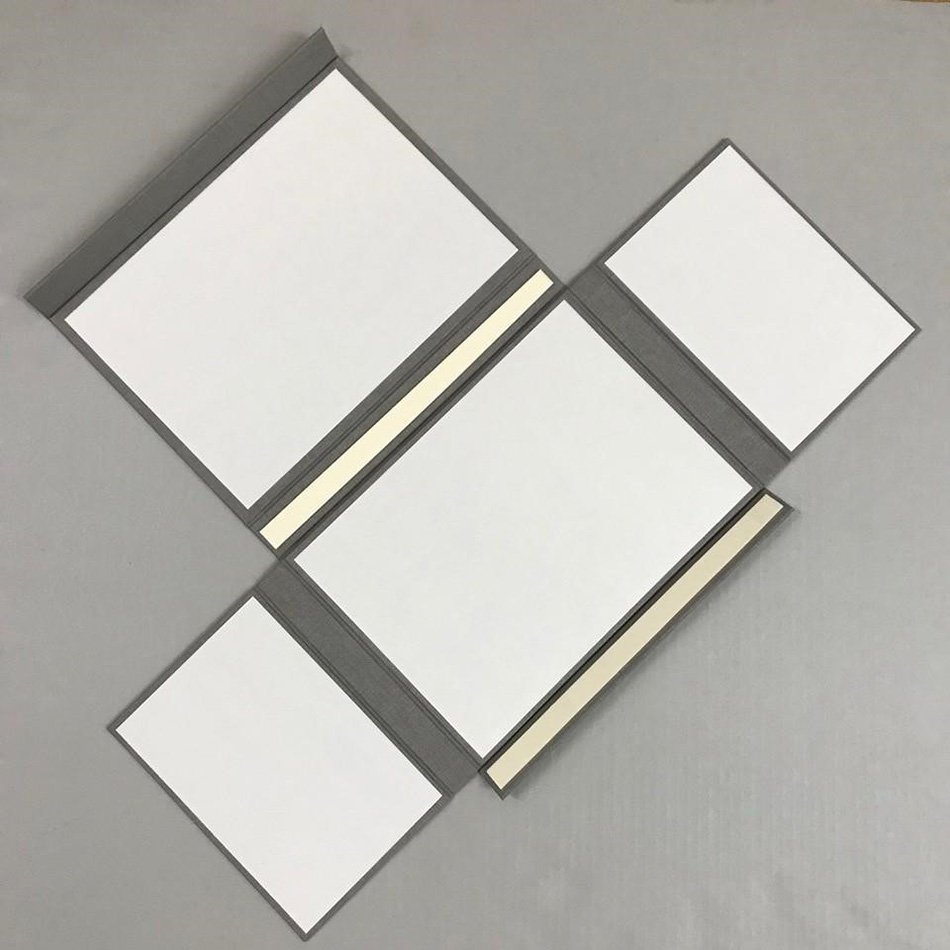
The structure of the box made in the workshop is a four-flap, wrap around box made of two parts adhered together. The inner, slightly smaller, tray has flaps which fold in at the top and the bottom to cover the contents, while the larger outer tray folds in at the left to make the top cover and secures to itself at the right edge with two flaps holding embedded magnets.
A handout provided in advance of the workshop descibed all of the steps in detail which meant delegates could concentrate fully on Sayaka’s demonstrations and the practically sessions wihtout worrying about writing everything down. The boxes we made on the course are excellent samples which can used as aides-memoires when we come to repeat the process at work and also as an example to show curators a new housing option.
Everything we learned will be useful. Upcoming boxing projects in Special Collections include housing parchment charters with bees wax pendant seals and limp vellum bound printed books. We are looking forward to applying our knowledge of magnetic box making to these projects.
Erica Kotze
Preventive Conservator
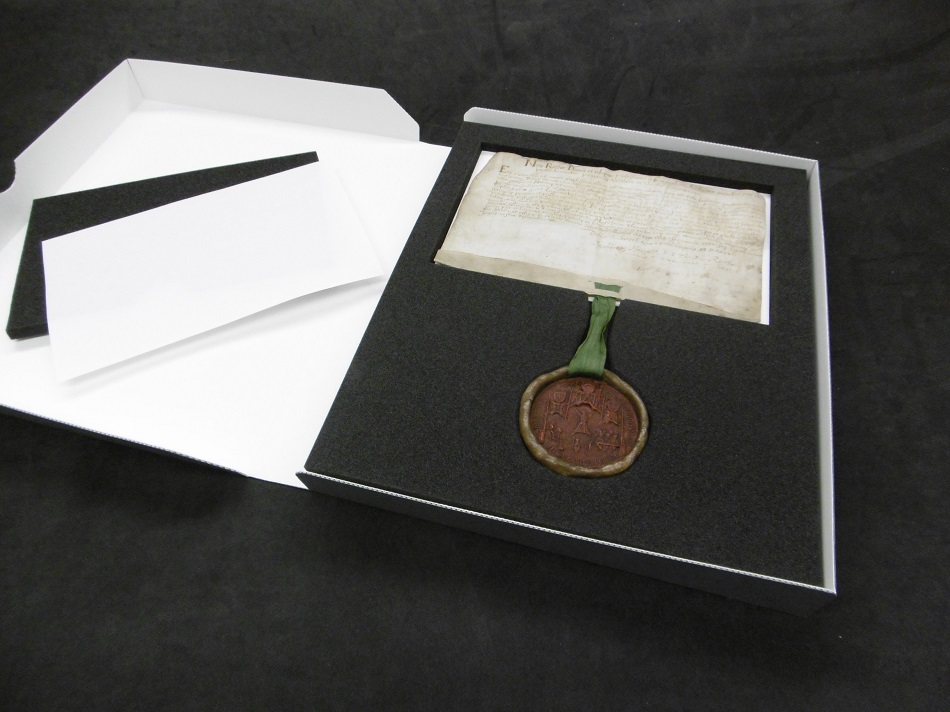
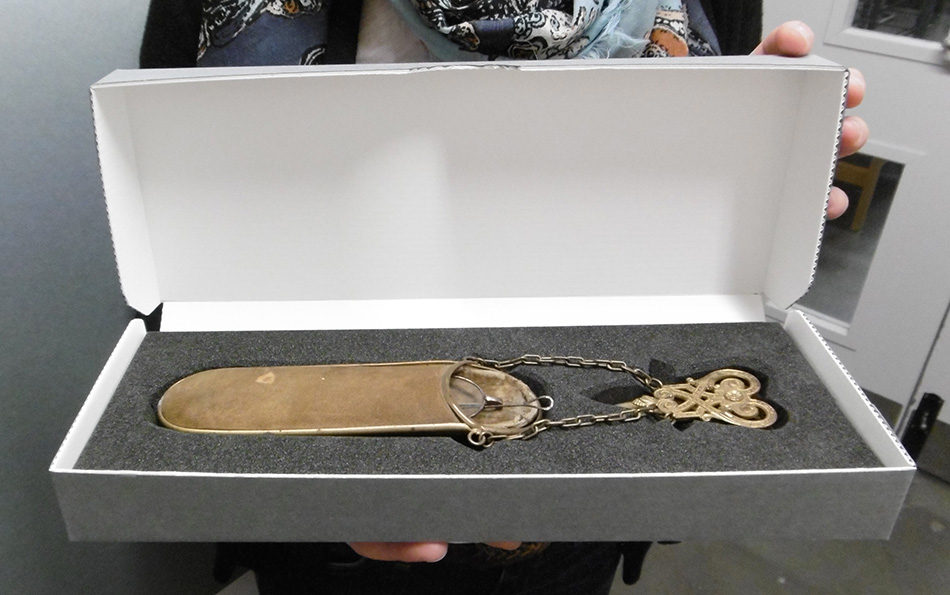
Is the handout available to others? It would be a good resource for individuals who have valuable books in their collection and wish to house them in appropriate boxes.
Hi Stephen, the handout was produced by the course tutor Sayaka as part of the resources for the course, and there was a fee to attend. Unfortunately, we are not able to give out copies of the handout. We can pass your query onto Sayaka who may have information about when the course might be repeated.